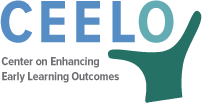 Many well-intended, well-designed plans have been created only to remain dormant on shelves. Change occurs through action, and even then, taking the right action effectively.
Many well-intended, well-designed plans have been created only to remain dormant on shelves. Change occurs through action, and even then, taking the right action effectively.
How should Collective Leadership proceed once a plan is developed? As early education moves from pilots and initiatives to sustained statewide programs, foresight can be a valuable asset to achieve desired results and avoid potential and predictable obstacles. Simply stated, the manner in which a plan is implemented is as central to success as the plan itself. Implementation Science (IS) examines the stages of effective implementation – Exploration, Installation, Initial Implementation, Full Implementation – and important drivers for competency, organization, and leadership. When collective leadership understands and applies the science behind successful application of research and how their role influences and is influenced by its implementation, they are better equipped to ensure success on the state and local level.
Who i s responsible for implementing an action plan in a Collective Leadership model? Everyone, including you. Collective responsibility and accountability are key to a plan’s faithful implementation and successful results. Throughout implementation of action and strategic plans, leaders hold themselves accountable both collectively and individually. They also hold one another accountable for both their actions and results. Collective leadership can succeed only to the extent members “own” and support the plan and fulfill personal and agency commitments. Action commitment forms such as the one to the left from the Annie Casey Foundation have been used effectively by early education leaders to hold themselves accountable for their roles in the plan’s success.
s responsible for implementing an action plan in a Collective Leadership model? Everyone, including you. Collective responsibility and accountability are key to a plan’s faithful implementation and successful results. Throughout implementation of action and strategic plans, leaders hold themselves accountable both collectively and individually. They also hold one another accountable for both their actions and results. Collective leadership can succeed only to the extent members “own” and support the plan and fulfill personal and agency commitments. Action commitment forms such as the one to the left from the Annie Casey Foundation have been used effectively by early education leaders to hold themselves accountable for their roles in the plan’s success.
Collective Le adership as an approach depends on engagement and commitment to accountability. A continuum of engagement and accountability for participating stakeholders can be found in the Accountability Pathway to assess the level of self or agency accountability.
adership as an approach depends on engagement and commitment to accountability. A continuum of engagement and accountability for participating stakeholders can be found in the Accountability Pathway to assess the level of self or agency accountability.
Resources
- Guide to Results-Based Planning and Facilitation: Achieving Results and Equity for Vulnerable Children and Youth (National Results and Equity Collaborative)
- An Integrated Stage-Based Framework for Implementation of Early Childhood Programs and Systems (2015) – (p. 20 – 23)
- Systems Building Resource Guide: Program Design and Implementation (Child Care State Capacity Building Center, 2016)
- The Critical Role of State Agencies in the Age of Evidence-Based Approaches: The Challenge of New Expectations (Van Dyke & Naoom, 2016)
- Leading for Results: The Accountability Pathway (video)
Activities
- Implementation Science Activities Workbook (NIRN/CEELO, 2017)
- Action Commitment Form (AECF)
- Accountability Pathway (Pillsbury, 2017)
